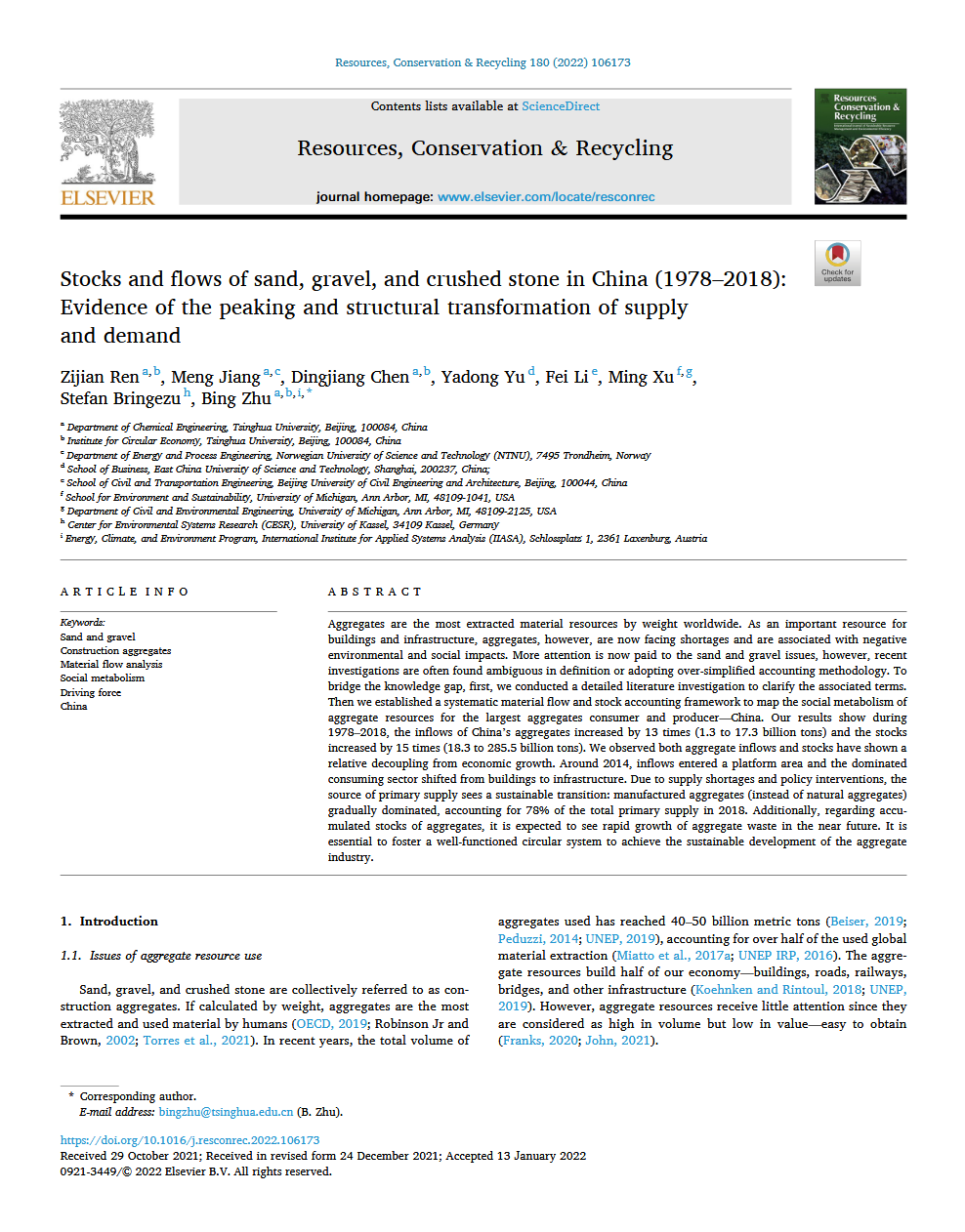Aggregates are the most extracted material resources by weight worldwide. As an important resource for buildings and infrastructure, aggregates, however, are now facing shortages and are associated with negative environmental and social impacts. More attention is now paid to the sand and gravel issues, however, recent investigations are often found ambiguous in definition or adopting over-simplified accounting methodology. To bridge the knowledge gap, first, we conducted a detailed literature investigation to clarify the associated terms. Then we established a systematic material flow and stock accounting framework to map the social metabolism of aggregate resources for the largest aggregates consumer and producer—China. Our results show during 1978–2018, the inflows of China's aggregates increased by 13 times (1.3 to 17.3 billion tons) and the stocks increased by 15 times (18.3 to 285.5 billion tons). We observed both aggregate inflows and stocks have shown a relative decoupling from economic growth. Around 2014, inflows entered a platform area and the dominated consuming sector shifted from buildings to infrastructure. Due to supply shortages and policy interventions, the source of primary supply sees a sustainable transition: manufactured aggregates (instead of natural aggregates) gradually dominated, accounting for 78% of the total primary supply in 2018. Additionally, regarding accumulated stocks of aggregates, it is expected to see rapid growth of aggregate waste in the near future. It is essential to foster a well-functioned circular system to achieve the sustainable development of the aggregate industry.


